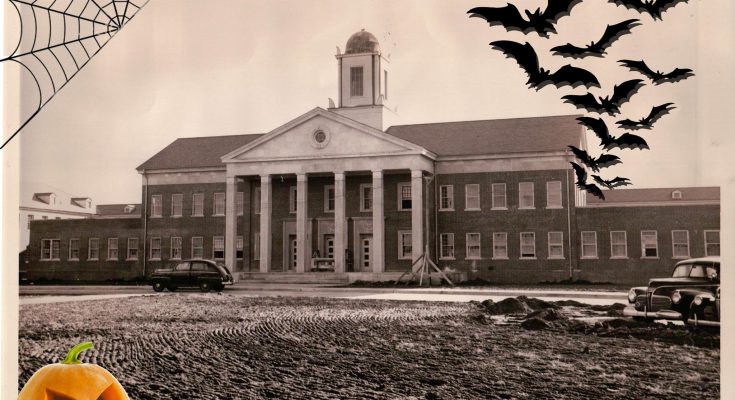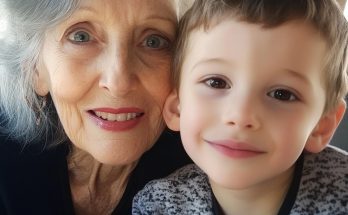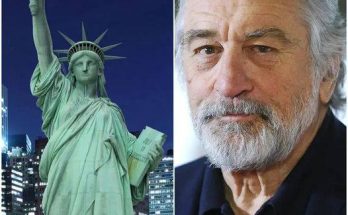VA’s history extends back to the American Revolutionary War period and includes the histories of at least nine different Federal departments, agencies, bureaus, or offices. In the nearly 240 years since the first federal veterans benefit was authorized, those histories have been entwined with some of America’s most significant historical events and people, to form part of VA’s history. Some of our hospitals and national cemeteries originated on old Army outposts built when America first expanded westward, some are located on archaeological sites, and others occupy former Indian schools, prison camps, asylums, orphanages, and such.
Folk tales and ghost stories often surround ancient lands, old or abandoned buildings, battlefields or other tragic event sites, burying grounds and cemeteries regardless of any facts. The idea of ghosts was even used in the military as recent as World War II with the use of “ghost armies” and in 1943 a grim poster at Camp Wheeler, GA, was displayed in an office where men were going through basic training, “Don’t let any soldier’s ghost be able to say—‘Damn you, you neglected my training.’” Around 1950 Halloween in the U.S. became more of a secular, commercial tradition to promote candy and costume sales for children. Since the 1980s Halloween has evolved into more of a fall celebration and family affair with adults dressing up in costumes, too. VA, DOD, other federal agencies, and even the White House have ghost tales associated with them that are now part of American culture.
In recent years, VA has undertaken several historical studies on its older buildings to comply with the National Historic Preservation Act and used professional historian contractors for the projects. Kelly Sellers Wittie, Historian for R. Christopher Goodwin & Associates, has researched many of our properties by interviewing VA staff, along with conducting archival historical research. She recently shared a VA ghost tale revealed at one of our facilities; you may read it below in its entirety. Below you will also find an image of the “ghost,” both story and image courtesy of Kelly Seller Wittie.
“Ghosts are most often rumored to haunt the halls to cause mischief or melancholy. At the Carl Vinson VAMC in Dublin, Georgia, however, a ghost stands sentry to correct mistakes made while alive and prevent future mishaps.
The influx of 20,000,000 Veterans following the end of World War II strained the existing VA hospital system, creating a pressing need for more beds in more facilities. Hospitals routinely had waiting lists, and as deployment accelerated, the need became even greater. VA responded to the needs of these veterans in 1946 with a massive campaign that called for the construction of over 180 new hospitals, at the cost of $448 million. These hospitals, constructed between 1946 and 1960 throughout the United States, were designed to provide the best healthcare in modern facilities for the veteran population of approximately 19 million; World War II veterans alone represented 15 million veterans. This effort occurred concurrently with nationwide construction of civilian healthcare facilities, which allowed VA to take advantage of new architectural and medical innovations in hospital construction practices. VA teamed with the U.S. Army Corps of Engineers and private architectural firms to construct their new hospitals. VA also took over existing Army and Navy hospitals constructed and used during World War II, but considered surplus when the war ended. These hospitals, those constructed by VA and those constructed earlier then assumed by VA, compose the Third Generation of United States Veterans Hospitals.
In 2010, VA began a nationwide inventory and assessment of eligibility of the Third Generation Hospitals for listing in the National Register of Historic Places. Many of these hospitals built after World War II have been adapted to modern medical care and continue to serve Veterans. Each facility shares over half a century of providing medical care for Veterans, yet each is unique, with its own story and history. Not surprisingly, some facilities also have their own stories of ghosts and hauntings.
The Carl Vinson VAMC in Dublin, Georgia, was built by the U.S. Navy during World War II to care for wounded sailors, and later, served as a center for research into rheumatic fever. Rheumatic fever affected several thousand World War II sailors and required long periods of time to recover. The Dublin Naval Hospital not only provided a place to convalesce, but also presented researchers a place to study the disease, and to produce advancements in treatment. The Navy ceded the hospital to VA in 1948. The original campus featured a central hospital and administration building, surrounded by eight ward buildings that were connected by corridors. Support facilities such as a boiler plant and personnel quarters were located to the sides and rear of the main hospital block. The Navy allocated funds for Colonial Revival detailing to blend aesthetically with the surrounding Georgia architecture. The style is displayed on campus buildings to varying degrees; Building #1 displays the highest style, while the boiler plant contains only the most minimal ornamentation.
Boilers were the workhorses of a hospital, responsible for providing the hot water necessary for cooking, cleaning, and sanitizing patient care areas. Prior to the installation of automatic machines, workers had to shovel coal into the units to supply steady fuel. This dangerous work, particularly grueling in the high temperatures of a Georgia summer, required constant attention and a strong back. Legend in Dublin tells the story of one such man, who fell asleep on the job, causing the boiler to burst. According to legend, a fellow employee watched in horror as the exploding machine decapitated the sleeping employee.
This [former employee] is now said to haunt the rooms of the boiler plant at Dublin. He is not a malicious or mischievous ghost, he is merely a constant reminder of the cost of dereliction of duty. The ghost stands approximately 5 ½ feet tall and wears a dark uniform. His dark hat frames a full, stern face. He does not rattle chains, shake doors, or wail into the corridors. Instead he wanders, head now back on his shoulders, to ensure that staff members have turned off lights, correctly set machines, and tidied the workspace. He even appears in photos from time to time, a stoic if ethereal reminder of the hospital’s past. The staff does not mind, so long as he remains a quiet colleague- the machines make noise enough.”
A CVVAMC Ghost Tale!



